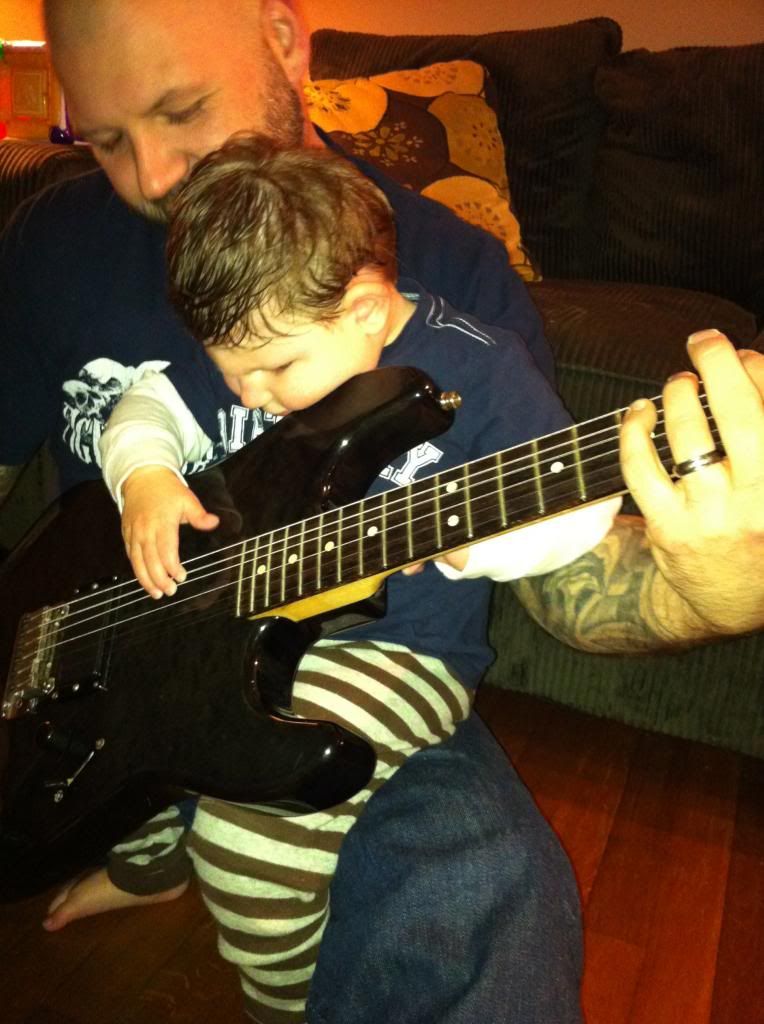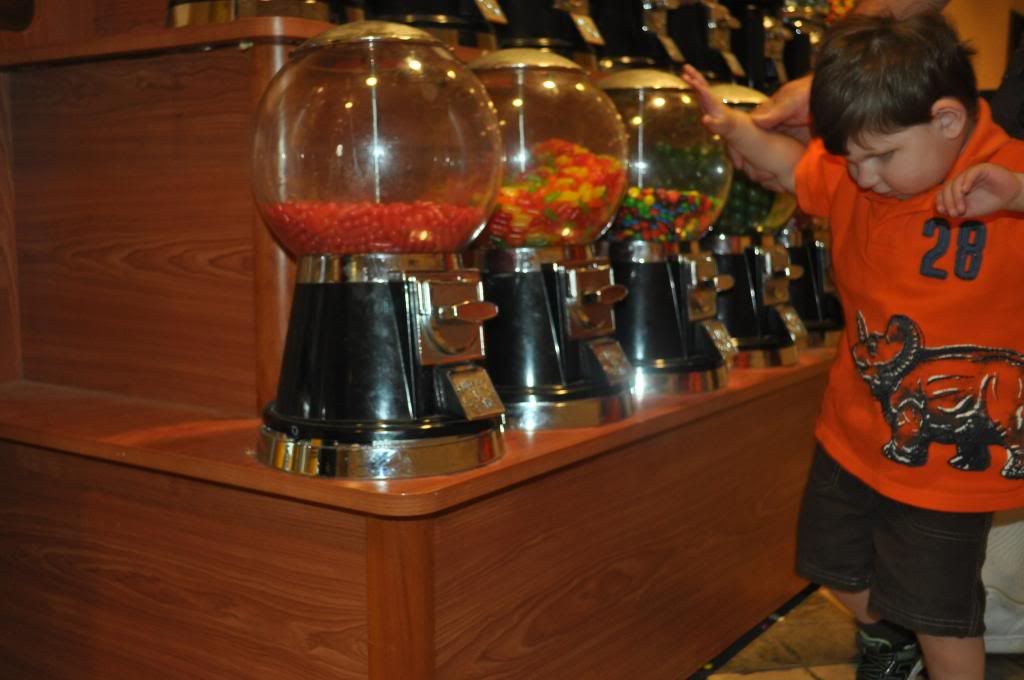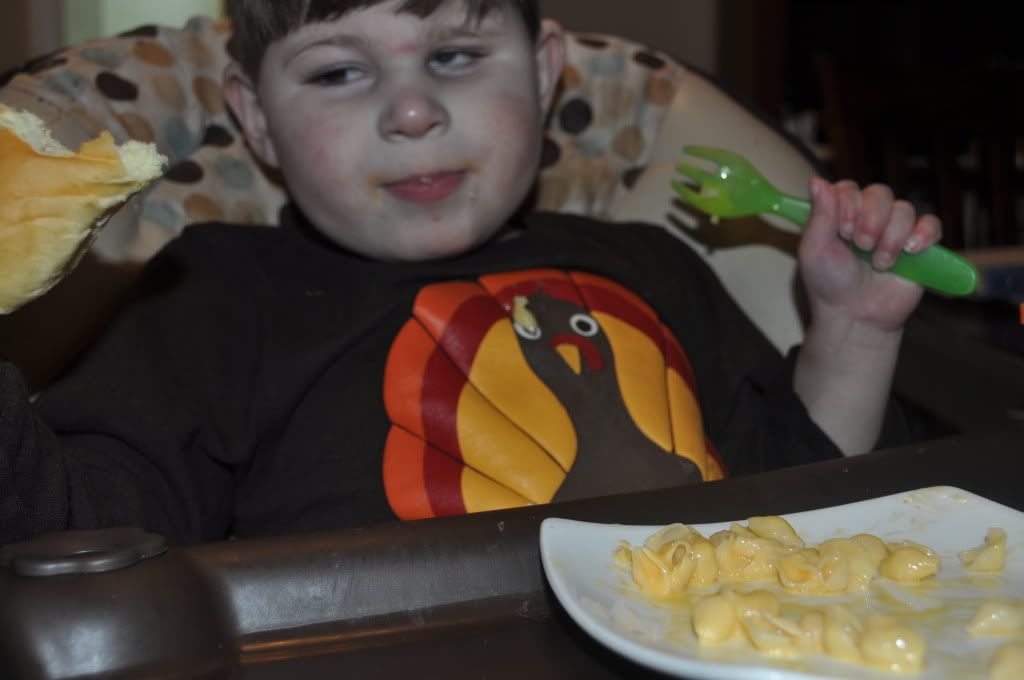 |
| Tom likes to learn new skills. |
Topics include making adaptations to the environment and materials and intervention strategies to support development and use of functional vision, hearing, and tactile skills as appropriate for an individual child’s learning needs. Selected strategies to promote early communication and interactions will also be discussed. Information will be provided through discussion, handouts, power point slides, and video demonstrations. Participants will analyze video examples and engage in small group problem solving activities.- from PaTTAN's website.
These trainings are aimed at those who teach children in school settings or through Early Intervention, but isn't a mother or father a child's first teacher? You bet! So I thought, why not attend and see what I can learn to help Tom.
I was also interested to get a peek into the thinking and attitudes of those who teach children with special needs. I was pleased to see an atmosphere of interest and genuine concern for students with disabilities. These were not people just showing up to collect some continuing education credits. I also recognized many faces that day; several of Tom's Early Intervention therapists were there!
The course was taught by Deborah Chen, Ph. D, who is an expert in the field of educating pre-school and school-age children with multiple disabilities, or other learning needs. She has a long history of working with children with special needs and used videos and anecdotes from her experience to demonstrate strategies. It's one thing to talk about hand-under-hand assistance, but it's another to see a video of it in action. I know that Tom responds differently to having something placed into his hand as opposed to exploring new items using the hand-under-hand technique.
In the picture below Tom is having O&M (Orientation and Mobility) training at the mall. We used a side hallway to practice walking straight and independently while keeping his head up. We used to do a little grid in the hallway with a predictable route that involved trailing the wall and crossing into open space with his "bumpers" or hands up. We would feel the pop and candy machines on our way to the empty part of the hallway. Here his TVI (Teacher of the Visually Impaired) is holding his arm to guide him as he feels the gumball machines on his way down the hall.
 |
| Hmm. Not hand-under-hand or hand-over-hand. I'm not sure what this qualifies as? Not ideal. |
About Hand Over Hand Technique
"Done too routinely and exclusively, hand-over-hand touch conditions the hands of the child who is deafblind to be passive, to wait for direction from the hands of another, and to avoid reaching out into the world for information and stimulation. It also shifts the child’s attention from the object he is touching to the hands which are on top of his." - Barbara Miles
It seems like such a small difference; your hands are under the child's hands instead of on top. But imagine you are blind and someone takes your hands and starts moving them for you and placing things in your hands. Does that sound pleasant? Who is in control? Not the blind person.
 |
| I got the fork! |
I frequently use hand-under-hand technique when feeding Tom. That's when I really notice the benefit of hand-under-hand. I tell him it's time for a bite of "x food" and then I hold the loaded fork and touch it to the palm of his hand. I don't push food in his mouth and I don't put my hand over his and grip the fork. I give him verbal information (time for a bite of mac and cheese) and then tactile information (touch the loaded fork to his hand). This allows him to take the fork from me and feed himself. He is in control.
As parents, we are probably more guilty than most about not using the hand-under-hand technique. We are busy and need to get our children dressed, fed, in the car, etc... but we are missing opportunities when we hurry up and "do for" instead of "do with." I have been trying to slow down. It's not easy, but you will find that the speed could pick up again as the child learns new skills.
Doing For Or Doing With!
As I said, I am sometimes guilty of doing things for Tom instead of taking the time to teach him. Here is a good example. Tom can walk just fine but sometimes I will pick him up instead of walking with him just because it is faster. Then Tom began refusing to walk to or from the car. Those seconds I gained by carrying him were lost to tantrums when I wanted him to walk to the car because I was carrying items. He flat out refused. I had to march him to the car many times while he cried hysterically. (As cars went by and made faces at the mean Mommy!) Eventually, he started walking to the car again without a problem, but it was a good lesson for me.
This course was full of information and as I frantically took notes I sometimes missed some of the resources they cited. Luckily, I got an email with all of the resources discussed in class. Here are some I though blog readers would like to check out.
Washington Sensory Disabilities Services - http://www.wsedonline.ort
- videos on experience stories and making books for children
- videos on hand under hand and using object cues in daily routines
- information on child preferences
- Barbara Miles – Mutual Tactile Attention
- Librarian – to search for articles/information on specific topics related to Deaf blindness
- Look for resources on co-active signs and tactile signs, and experience stories
- Successful adaptations for learning to use touch effectively
- Handouts on coactive signs, tactile signs, hand over and under support
- Materials available in English and Spanish
Cara’s Kit for Toddlers - http://products.
Cara’s Kit for Preschoolers - http://www.dec-sped.org/Store/
Tactile Experience Books
They talked a lot at the end of the training about creating tactile experience books for children with visual impairments. I wish we had more time to discuss this. Tom doesn't care that I take photos of him every day and document his life. He can't see it. But if we went on a trip and collected little mementos, (rocks or a leaf from a walk, a napkin from a restaurant, wristbands from an amusement park), we could build a story by pasting these items in a little homemade book.
I must admit that I have never tried to create a book for Tommy. It is something I really want to try because I know it would be meaningful and interesting to him. Now I just have to figure out what kind of book to do. Maybe I could start with a Valentine's day book?
Creating and Using Tactile Experience Books for Young Children With Visual Impairments - http://www.tsbvi.edu/
They talked a lot at the end of the training about creating tactile experience books for children with visual impairments. I wish we had more time to discuss this. Tom doesn't care that I take photos of him every day and document his life. He can't see it. But if we went on a trip and collected little mementos, (rocks or a leaf from a walk, a napkin from a restaurant, wristbands from an amusement park), we could build a story by pasting these items in a little homemade book.
I must admit that I have never tried to create a book for Tommy. It is something I really want to try because I know it would be meaningful and interesting to him. Now I just have to figure out what kind of book to do. Maybe I could start with a Valentine's day book?
Creating and Using Tactile Experience Books for Young Children With Visual Impairments - http://www.tsbvi.edu/
This is Orion's stuff, too! :) Pretty cool, huh? I was at an active learning workshop (this stuff might be up your alley, too, for Thomas) and I was remarking with a friend that strategies designed for deafblind children feels like universal design, applies to so many children regardless of their abilities... autism, deafblind, blind, CP, just typical, etc. For example, calendar system, I know is used for DB and also used for children with autism. It'll work fabulous for all children!
ReplyDeleteAs for hand under hand... it's very patience-trying especially when I want Orion to sign. I just leave him alone... even though it may be faster to teach him by forming his hands for him... it's more damaging in the long run waiting for the other person to take over your hands to "speak" your mind.
Www.nationaldb.org and www.wsdsonline.org were two websites I visited frequently prior to and after Orion's birth. They both are SO RESOURCEFUL!!
What touched me was Barbara Miles video... that Orion and I can 'look' at the same thing. Awww, touched my heart.
(I'll stop. Don't want to hijack your blog here! ;)) Can I share your post?
Yes, please share. And feel free to comment as much as you want here! It's always such helpful info about how you and Orion work/live and I know I learn from it.
DeleteI agree that a lot of these tactics can apply to children with any special need or any child at all that is struggling.
I had never heard of Barbara Miles before this workshop. I'm sure she's old news to TVIs and such but she's a new favorite of mine!
I so enjoy your enthusiasm and interest in learning about your son's needs! I completely agree that a child's first teachers (and primary lifelong teachers) are his parents - good for you for adopting the title of teacher and joining the ranks in professional development workshops :)
ReplyDeleteAlso, thank you for the reminder about hand-under-hand!
First book idea: A book about one of the routes he travels independently such as from the house to the car :) As an O&M I love making stories out of routes because it teaches sequencing, greater awareness of sounds/smells/textures and learning to anticipate these things. It also provides a language for the experience which is essential for future route development and familiarization to new places.
That's a good idea. Our house is on a busy road so he can't go to the car independently yet. The cars buzzing past make him nervous, and rightly so!
DeleteA route book would be a fun one and I bet he would get a lot from it. Thanks for the suggestion and encouragement!
We are still trying to navigate this new diagnosis. I can't wait to read more posts .
ReplyDelete